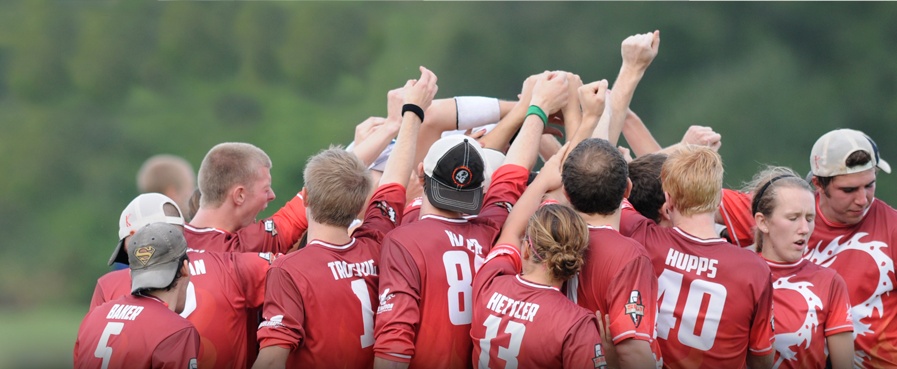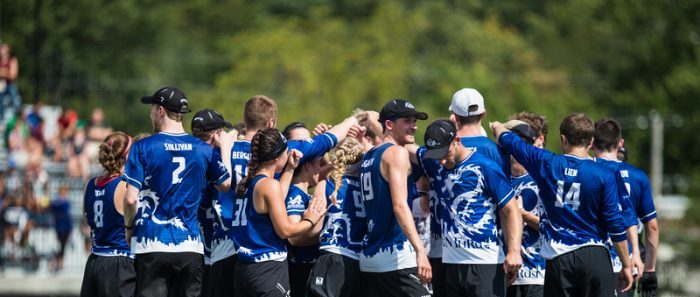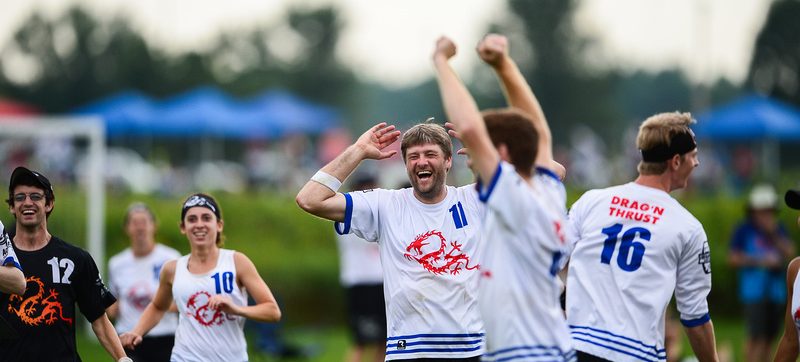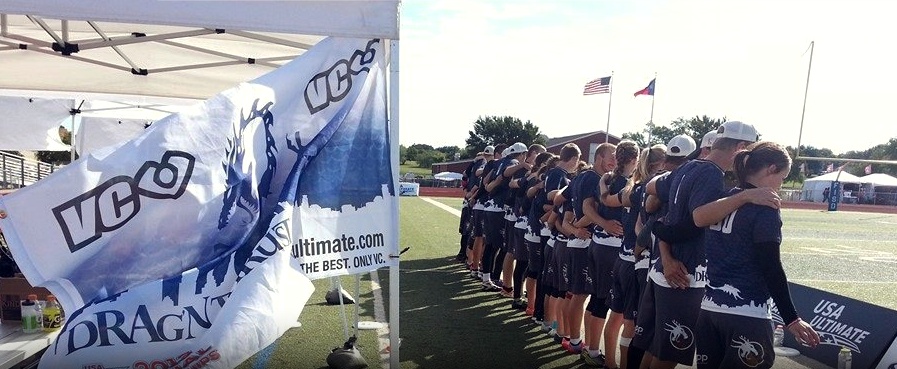By Jordan Hupp
Drag’n Thrust’s 2013 season represented the realization of a dream shared by every player, coach, and supporter of the team. That’s not to say that the entire season went perfectly, that everything went according to plan, or that we never had any doubts or frustrations, but the overcoming of adversity and the ability to pull together as a team at the right moment led to a national championship, a bid to the world games, and, for me, a renewed passion for the game. Every single player on the roster contributed to the success of the team, and it’s difficult for me to imagine the season going the way it did with any other group of people. That being said, it’s now time to face the reality that there will never again be a team exactly like Drag’n Thrust 2013. Teammates will move to different teams, different divisions, different cities. Players could decide that Ultimate isn’t a top priority for them anymore. Some people might just need a break from the constant intensity of training, practices, and tournaments, and the time taken away from family, work, or school. Last year’s Drag’n Thrust will never happen again. Each person that leaves the team leaves a gaping hole in the performance and culture of the team. It’s a brutal reality that is never easy to swallow, but all in all, I’m not worried.
Roster turnover is an issue that every team has to deal with. I have to admit, it’s a lot easier when you’re in a program that attracts talent and has a large pool from which to draw, but regardless of the size or reputation of a team, it’s always a challenge.

I attended college at the University of Chicago, a school with ~5,500 undergraduates and a middle-of-the-pack standing in D-III’s UAA (aka “Nerdy Nine”) varsity athletics conference. The depth of talent available is hardly comparable to larger schools with storied athletic programs, but regardless, we perennially compete with and hold our own against those larger programs. My first real battle with roster turnover came in my third year on the team, my first year as a captain. UChicago Junk (the team has since changed its name), had just come off a hugely successful season, in our eyes. A fifth-place finish at Regionals behind Illinois, Michigan, Ohio State, and Notre Dame. Our seniors and grad students led the charge in one of UChicago’s best seasons in recent history, and I had been happy to play my part as a continuation cutter on the O-line. My job in our horizontal stack consisted primarily of waiting for either Wallace Bourgeois or Joe Pariser to get the disc, or for Ryland Barton or Michael Calderbank to get power position. At that point, I’d streak deep from the break sideline and either catch the disc in stride, or sky anyone in my way. All’s well that ends well. We rode this formula to success throughout the year, but unfortunately, Wallace, Joe, and Ryland were all either grad students or seniors, so our gameplan expired.
The following year, I was suddenly one of the most experienced cutters on the team. I decided that my days of cutting deep were behind me, and that I had to accept the role of a primary cutter, distributing the disc to younger players and always staying close to the action. This was one of the worst decisions I have made in my Ultimate career, and the team suffered for it. After finishing 5th at Regionals the year before, we did not even make it out of Sectionals. In our end-of-season huddle following our final loss, I thanked everyone for their hard work and effort throughout the year, and I tried to console the group, brushing the season off as a “rebuilding year”. I still regret using those words. In reality, I had lost an internal battle, and I let roster turnover get the better of me. In this game, there isn’t any room for “rebuilding years”, even within smaller programs. We had all of the talent and athleticism we needed, but I failed to reassess the team’s strengths, and when we tried to use the prior year’s formula with completely new players, the results simply weren’t there.
I spent much of the offseason thinking about how to get the team back on track, and one of my first realizations was things wouldn’t just get better on their own. We had lost a few more seniors, most returning players were spending their summers on internships rather than ultimate, and to think that the seniors that we lost would be outweighed by an incoming freshman class would be foolishly optimistic. Something had to change about how the team operated, and with that mindset I took a fresh look at our personnel and started putting some thought into how each person could best contribute. After assessing each player and his potential role on the team, I finally turned to my own role and came to terms with something that should have been glaringly obvious: I’m a deep cutter. I had spent an entire year trying to be a Wallace Bourgeois or a Joe Pariser because I thought that the holes they left needed to be filled, and I was the one to do it. In the end, yes, they were crucial pieces of a puzzle, but it’s not enough to try to cram a new piece into their empty spaces. Each season is a new team and a new puzzle. With a fresh group of players and a strategy built for them, Junk’s 2011 team finished 2nd in the conference and 5th in the region, and I was able to walk away from my college career with a sense of pride and accomplishment.

Roster turnover presents a unique challenge to every team every year. In order to meet the challenge, coaches, captains, and players need to be ready to adapt to the team’s new components. As a team and as a player, it’s vital that you play to your strengths. It’s important to have players that you admire, but don’t fall into the trap of trying to “fill their shoes”. Inevitably, there will be some aspects of the game where they are better than you, but don’t forget that it’s a two-way street, and there are some components of the game where you are stronger. Don’t limit yourself by trying to be someone else, and don’t hold back your team by forcing strategies that were built around a different roster. The sooner you let go of the team of yesteryear, the sooner you get back to your full potential. Drag’n Thrust 2013 is gone, but as I said, I’m not worried.
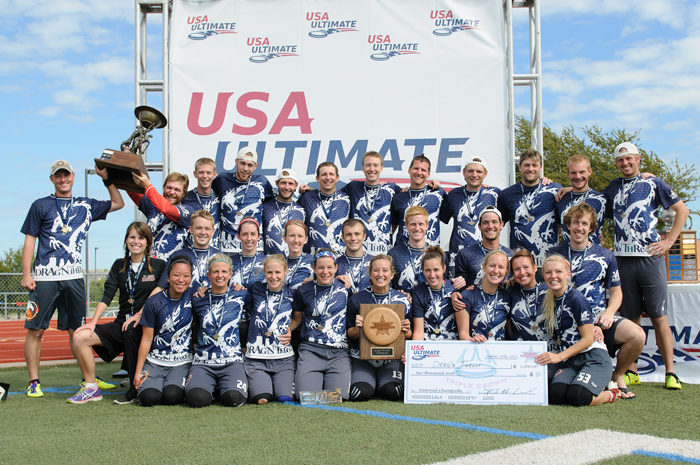
Photo by UltiPhotos.com
